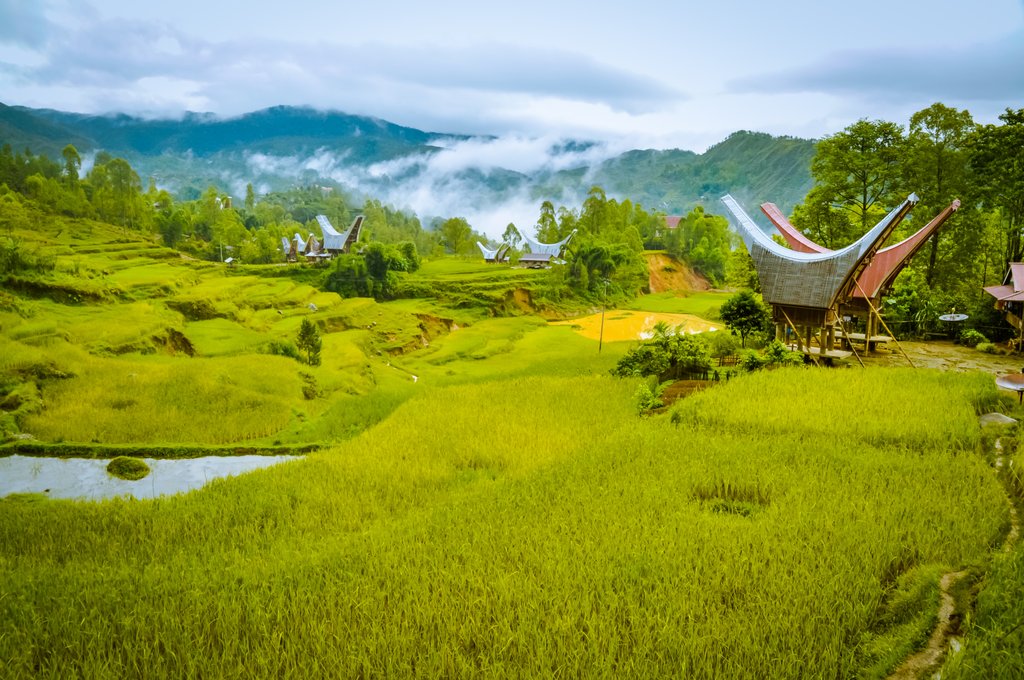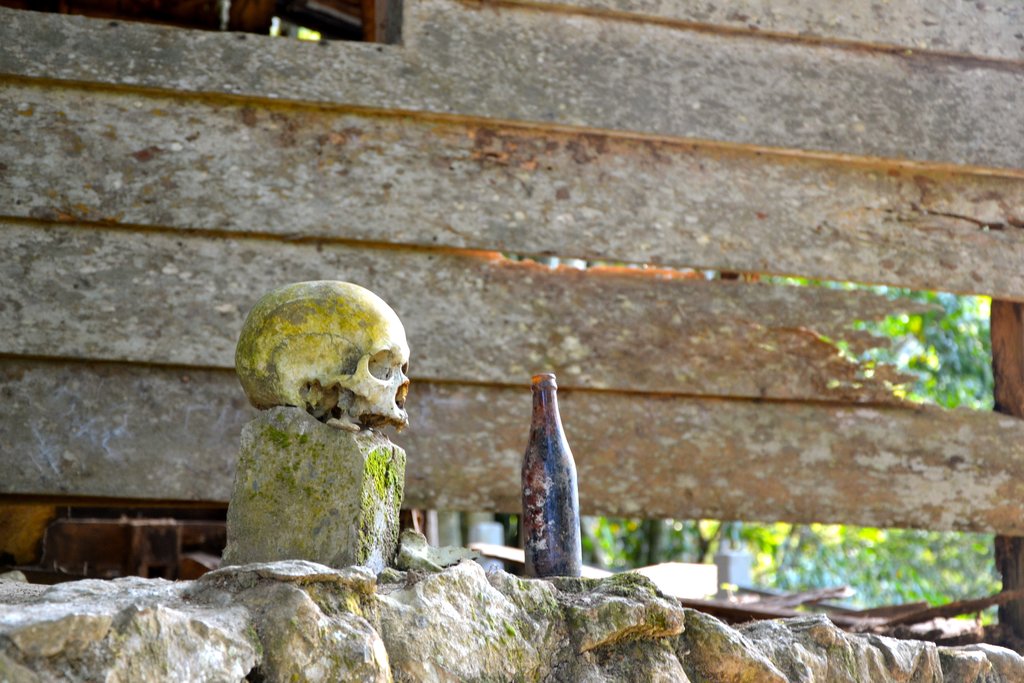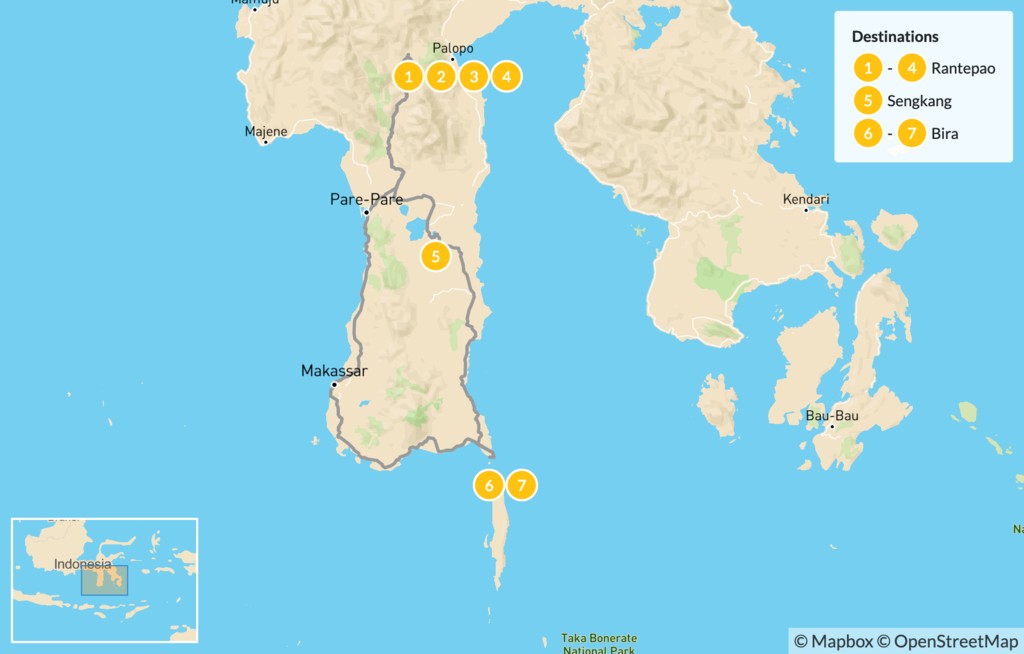
Explore South Sulawesi - 8 Days

Highlights
- Learn about the unique Torajan funeral culture
- Explore the highlands of Rantepao
- Stay in a floating house on Tempe Lake
- Swim with sea turtles off the beaches of Bira
Brief Itinerary
| Day | Highlights | Overnight |
|---|---|---|
| Day 1 | Makassar to Rantepao | Rantepao |
| Day 2 | Explore Tana Toraja | Rantepao |
| Day 3 | Rantepao Village Tour | Rantepao |
| Day 4 | Market Tour | Rantepao |
| Day 5 | Travel to Sengkang via Palopo and Tansitolo | Sengkang |
| Day 6 | Travel to Bira via Kajang Village | Bira |
| Day 7 | Liukang Loe Island | Bira |
| Day 8 | Depart Bira |
Detailed Itinerary
Day 1: Makassar to Rantepao

Welcome to Makassar! You'll meet your guide at the airport to begin your roughly nine-hour journey to Rantepao, the capital of the North Toraja Regency and cultural center of the Toraja ethnic group. The area opened for tourism in the 1970s and has been the starting point for visiting the region ever since.
The roads become smaller and more winding as you go along, the air turning fresh and cool as you start to spot Tongkonan traditional houses with roofs shaped like buffalo horns along the way. Once you arrive in Rantepao, you'll have the evening to yourself to wander around the local market, learn about area traditions at the Toraja Village, or relax in your lodgings.
Day 2: Explore Tana Toraja

Get acquainted with your surroundings today in Tana Toraja (Toraja Village), nestled beyond the mountains and granite cliffs of the central Sulawesi highlands. Torajans are especially known for their varied funeral rites, which you'll learn about today.
Start off in Lemo, once of the oldest burial cliffs in Toraja. You'll follow a small muddy path through the rice paddies up to the base of a large cliff where the graves have been dug. Continue on to Suaya in the southeast of Tana Toraja, surrounded by ponds and rice paddies and home to the tombs of the Royal Family of Sangalla. The giant rock of Suayajust houses the graves, topped with tau tau funeral effigies.
Go on to Kambira, a village known for its tree burials. Torajans believe that babies who die before they grow teeth are still pure and need to be returned to the cradle of nature, so they should be interred within living trees. This ritual is no longer practiced, however, with the last tree burial recorded more than 50 years ago. Then off to Londa cave, two natural caves where bones of the deceased can be seen tucked into crevices and hanging from the ceiling, along with coffins tucked into the cave roof.
You've likely noticed the tau tau effigies looking down from the rocks at these burial sites. These wooden statues indicate a high social status for the deceased.
Your last stop for the day is Ke'te Kesu, a UNESCO World Heritage Site village. The village is one of the most complete traditional Torajan complexes in the highlands, with six Tongkonan houses along the main avenue, 12 granaries, a large open ceremonial ground, and burial site. It's also home to a museum within one of the Tongkonan, where you can learn more about its history.
Day 3: Rantepao Village Tour

Start off your village tour today in Tinombayo Village, sometimes called a village above the clouds for its views of the rice fields and surrounding landscape. Head to Pallawa next, known for its complex of Tongkonan houses, including one of the oldest in Tana Toraja. Continue on to Sa'dan, famous for its traditional ikat weaving and wood carvings, and Bori' Parinding, home to the area's largest menhir field, stone megaliths that used to mark significant funeral or religious sites.
Chat with a local specialist who can help organize your trip.
Day 4: Market Tour

Head to Marante this morning, a village known for its limestone hill, giant barns, and Tongkonan. The limestone hill is also a burial site, a traditional Erong tombstones, a design that is echoed in wood in other areas but here embodied in the limestone.
Go onward to Siguntu at Makale, the city center of Tana Toraja, and see what residential life in Tana Toraja is like. It's best known for its animal market, held every six days, where vendors sell animals ranging from chickens to special water buffalo used in funeral rituals that can cost millions of rupiahs.
Day 5: Travel to Sengkang via Palopo and Tansitolo

Hop on the road this morning to Palopo to visit a craft weaving factory. After a stroll through the artwork to break up the roughly seven-hour trip, continue on to Sengkang. The area is known for its floating village on Tempe Lake, the largest lake in Sulawesi. You'll take a boat trip out onto the lake to get an up-close view of both the floating houses and the many species of birds that call the lake their home.
Day 6: Travel to Bira via Kajang Village

Leave the shores of Lake Tempe for your seven-hour transfer to Tanjung Bira. You'll make a stop on the way at the Kajang/Ammatoa Subdistrict and Tana Towa Village. The resident members of the Kajang tribe are known for their all-black clothing. The color ties into their life philosophy, as humans go from the dark womb of their mother eventually to the darkness of the grave. It is possible to rent clothes at the entrance of the village to make sure you are dressed respectfully.
Continue on to Bira, known for its high shark population and excellent scuba diving. This relaxing location at the southern tip of Sulawesi marks the spot where oceanic currents converge, with upswells of cooler water from the deeper ocean making it an ideal habitat for a variety of marine life.
Day 7: Liukang Loe Island

Take a day trip to neighboring Liukang Loe Island on the west side of Tanjung Bira Beach. You'll be even further from any crowds on this small island, where clear water and white sand beckon. Go for a swim or snorkel amidst the sea turtles, corals, and small fish darting through the water.
Day 8: Depart Bira

Wave goodby to the beaches of Bira before you head back to Makassar, approximately a 6-hour drive. If you have time, make a stop at the salt marshes and shipyards of Tana Beru to watch the construction of a traditional phinisi wooden boat. Your road back to the city will be lined with colorful houses and rice fields before you reach the airport.
